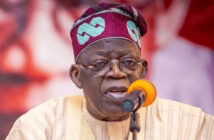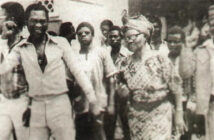This may come as a surprise to many readers, but one of the most vexing questions in African-American history is whether or not African-Americans themselves actually owned slaves. The short answer to this question is, of course yes, but why?
The answers to these questions are complex, and historians have been arguing for some time over whether free blacks purchased family members as slaves in order to protect them — motivated, on the one hand, by benevolence and philanthropy, as historian Carter G. Woodson put it, or whether, on the other hand, they purchased other black people “as an act of exploitation,” primarily to exploit their free labor for profit, just as white slave owners did. The evidence shows that, unfortunately, both things are true. The great African-American historian, John Hope Franklin, states this clearly: “The majority of Negro owners of slaves had some personal interest in their property.” But, he admits, “There were instances, however, in which free Negroes had a real economic interest in the institution of slavery and held slaves in order to improve their economic status.”
And for a time, free black people could even “own” the services of white indentured servants in Virginia as well. Free blacks owned slaves in Boston by 1724 and in Connecticut by 1783; by 1790, 48 black people in Maryland owned 143 slaves. One particularly notorious black Maryland farmer named Nat Butler “regularly purchased and sold Negroes for the Southern trade,” Halliburton wrote.
How Many Slaves Did Blacks Own?
So what do the actual numbers of black slave owners and their slaves tell us? In 1830, the year most carefully studied by Carter G. Woodson, about 13.7 percent (319,599) of the black population was free. Of these, 3,776 free Negroes owned 12,907 slaves, out of a total of 2,009,043 slaves owned in the entire United States, so the numbers of slaves owned by black people over all was quite small by comparison with the number owned by white people. In his essay, ” ‘The Known World’ of Free Black Slaveholders,” Thomas J. Pressly, using Woodson’s statistics, calculated that 54 (or about 1 percent) of these black slave owners in 1830 owned between 20 and 84 slaves; 172 (about 4 percent) owned between 10 to 19 slaves; and 3,550 (about 94 percent) each owned between 1 and 9 slaves. Crucially, 42 percent owned just one slave.
It is reasonable to assume that the 42 percent of the free black slave owners who owned just one slave probably owned a family member to protect that person, as did many of the other black slave owners who owned only slightly larger numbers of slaves. As Woodson put it in 1924’s Free Negro Owners of Slaves in the United States in 1830, “The census records show that the majority of the Negro owners of slaves were such from the point of view of philanthropy. In many instances the husband purchased the wife or vice versa … Slaves of Negroes were in some cases the children of a free father who had purchased his wife. If he did not thereafter emancipate the mother, as so many such husbands failed to do, his own children were born his slaves and were thus reported to the numerators.”
Moreover, Woodson explains, “Benevolent Negroes often purchased slaves to make their lot easier by granting them their freedom for a nominal sum, or by permitting them to work it out on liberal terms.” In other words, these black slave-owners, the clear majority, cleverly used the system of slavery to protect their loved ones. That’s the good news.
But not all did, and that is the bad news.
Halliburton concludes, after examining the evidence, that “it would be a serious mistake to automatically assume that free blacks owned their spouse or children only for benevolent purposes.” Woodson himself notes that a “small number of slaves, however, does not always signify benevolence on the part of the owner.” And John Hope Franklin notes that in North Carolina, “Without doubt, there were those who possessed slaves for the purpose of advancing their [own]well-being … these Negro slaveholders were more interested in making their farms or carpenter-shops ‘pay’ than they were in treating their slaves humanely.” For these black slaveholders, he concludes, “there was some effort to conform to the pattern established by the dominant slaveholding group within the State in the effort to elevate themselves to a position of respect and privilege.” In other words, most black slave owners probably owned family members to protect them, but far too many turned to slavery to exploit the labor of other black people for profit.
Who Were These Black Slave Owners?
John Carruthers Stanly – born a slave in Craven County, N.C., the son of an Igbo mother and her master, John Wright Stanly — became an extraordinarily successful barber and speculator in real estate in New Bern. As Loren Schweninger points out in Black Property Owners in the South, 1790-1915, by the early 1820s, Stanly owned three plantations and 163 slaves, and even hired three white overseers to manage his property! He fathered six children with a slave woman named Kitty, and he eventually freed them. Stanly lost his estate when a loan for $14,962 he had co-signed with his white half brother, John, came due. After his brother’s stroke, the loan was Stanly’s sole responsibility, and he was unable to pay it.
William Ellison – at his death on the eve of the Civil War, Ellison was wealthier than nine out of 10 white people in South Carolina. He was born in 1790 as a slave on a plantation in the Fairfield District of the state, far up country from Charleston. In 1816, at the age of 26, he bought his own freedom, and soon bought his wife and their child. In 1822, he opened his own cotton gin, and soon became quite wealthy. By his death in 1860, he owned 900 acres of land and 63 slaves. Not one of his slaves was allowed to purchase his or her own freedom.
Black slave owners in Louisiana
Louisiana, as we have seen, was its own bizarre world of color, class, caste and slavery. By 1830, in Louisiana, several black people there owned a large number of slaves, including the following: In Pointe Coupee Parish alone, Sophie Delhonde owned 38 slaves; Lefroix Decuire owned 59 slaves; Antoine Decuire owned 70 slaves; Leandre Severin owned 60 slaves; and Victor Duperon owned 10. In St. John the Baptist Parish, Victoire Deslondes owned 52 slaves; in Plaquemine Brule, Martin Donatto owned 75 slaves; in Bayou Teche, Jean B. Muillion owned 52 slaves; Martin Lenormand in St. Martin Parish owned 44 slaves; Verret Polen in West Baton Rouge Parish owned 69 slaves; Francis Jerod in Washita Parish owned 33 slaves; and Cecee McCarty in the Upper Suburbs of New Orleans owned 32 slaves. Incredibly, the 13 members of the Metoyer family in Natchitoches Parish — including Nicolas Augustin Metoyer, pictured — collectively owned 215 slaves.
Antoine Dubuclet and his wife Claire Pollard owned more than 70 slaves in Iberville Parish when they married. According to Thomas Clarkin, by 1864, in the midst of the Civil War, they owned 100 slaves, worth $94,700. During Reconstruction, he became the state’s first black treasurer, serving between 1868 and 1878.
Andrew Durnford was a sugar planter and a physician who owned the St. Rosalie plantation, 33 miles south of New Orleans. In the late 1820s, David O. Whitten tells us, he paid $7,000 for seven male slaves, five females and two children. He traveled all the way to Virginia in the 1830s and purchased 24 more. Eventually, he would own 77 slaves. When a fellow Creole slave owner liberated 85 of his slaves and shipped them off to Liberia, Durnford commented that he couldn’t do that, because “self interest is too strongly rooted in the bosom of all that breathes the American atmosphere.”
Black women were also involved
It would be a mistake to think that large black slaveholders were only men. In 1830, in Louisiana, the aforementioned Madame Antoine Dublucet owned 44 slaves, and Madame Ciprien Ricard owned 35 slaves, Louise Divivier owned 17 slaves, Genevieve Rigobert owned 16 slaves and Rose Lanoix and Caroline Miller both owned 13 slaves, while over in Georgia, Betsey Perry owned 25 slaves. According to Johnson and Roark, the wealthiest black person in Charleston, S.C., in 1860 was Maria Weston, who owned 14 slaves and property valued at more than $40,000, at a time when the average white man earned about $100 a year. (The city’s largest black slaveholders, though, were Justus Angel and Mistress L. Horry, both of whom owned 84 slaves.)
In Savannah, Ga., between 1823 and 1828, according to Betty Wood‘s Gender, Race, and Rank in a Revolutionary Age, Hannah Leion owned nine slaves, while the largest slaveholder in 1860 was Ciprien Ricard, who had a sugarcane plantation in Louisiana and owned 152 slaves with her son, Pierre — many more that the 35 she owned in 1830. According to economic historian Stanley Engerman, “In Charleston, South Carolina about 42 percent of free blacks owned slaves in 1850, and about 64 percent of these slaveholders were women.” Greed, in other words, was gender-blind.
Why They Owned Slaves
These men and women were among the largest free Negro slaveholders, and their motivations were neither benevolent nor philanthropic. One would be hard-pressed to account for their ownership of such large numbers of slaves except as avaricious, rapacious, acquisitive and predatory.
Culled from The Root




